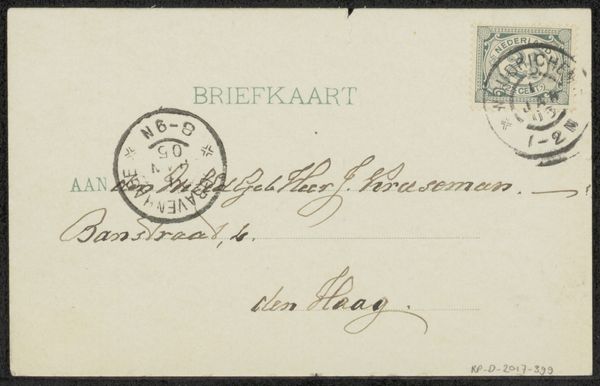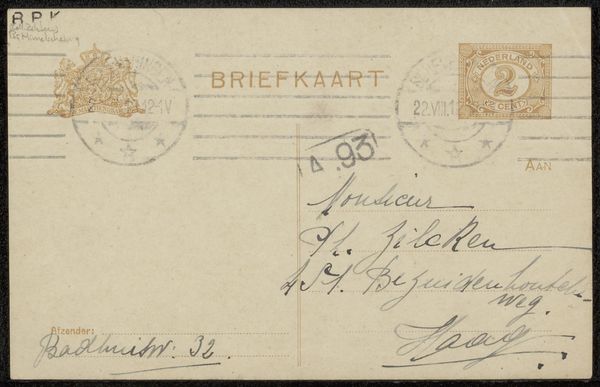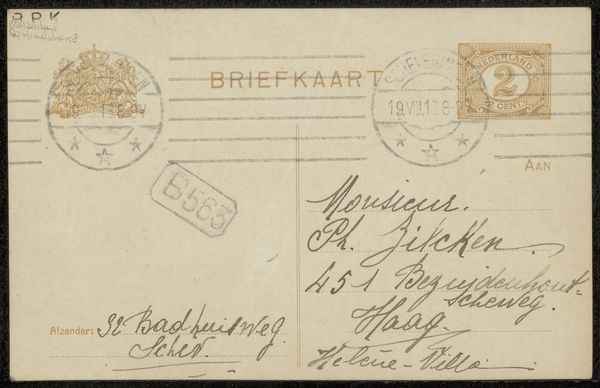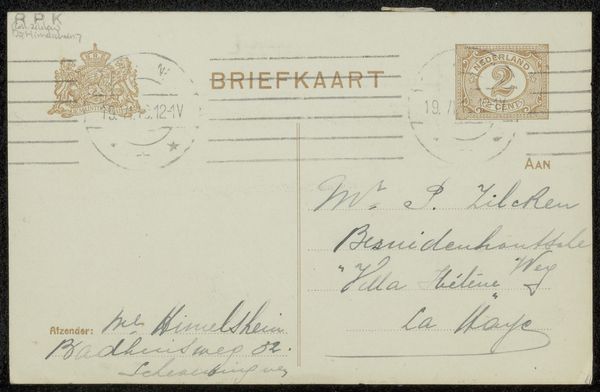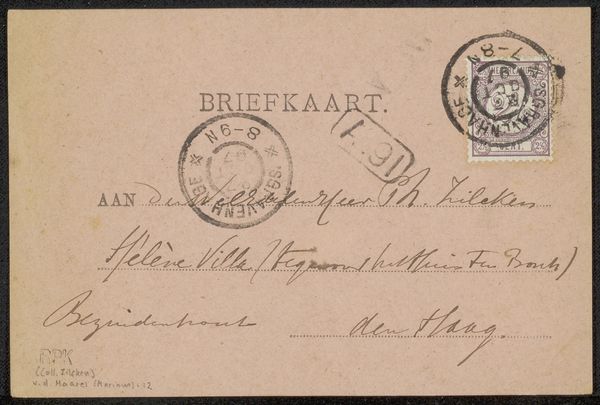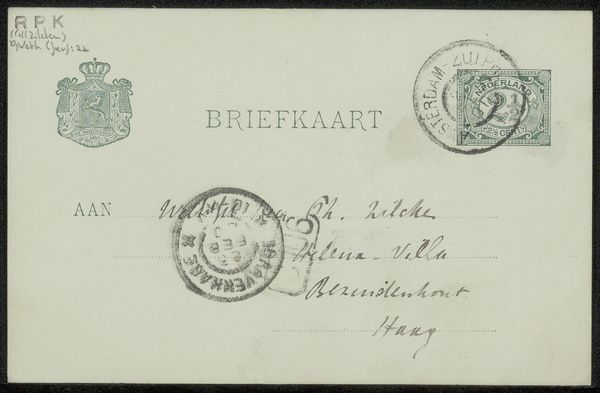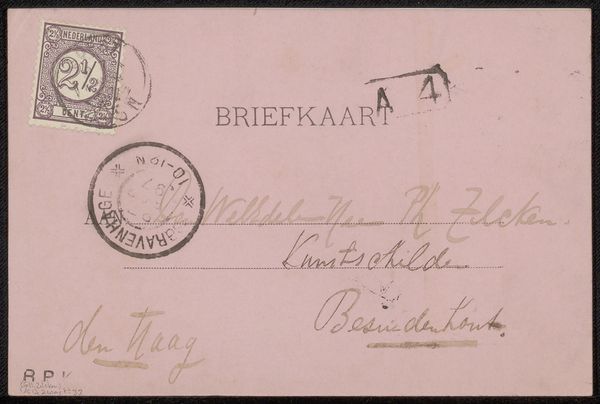
drawing, paper, ink
#
drawing
#
dutch-golden-age
#
paper
#
ink
Copyright: Rijks Museum: Open Domain
Curator: Here we have "Briefkaart aan Philip Zilcken," a drawing with ink on paper, potentially created between 1901 and 1929 by Eduard Karsen. The materials are humble, but the history it represents—a physical connection between individuals in another time—makes it feel quite profound. Editor: The visual language here is bureaucratic but deeply personal, and the texture of the ink strokes lends the message an immediate sense of humanity and emotion. It also begs so many questions—who was Zilcken? Why was Karsen writing to him? Curator: Absolutely. While the specifics of this particular letter may remain a mystery, the fact that this postcard—a symbol of communication—was chosen as the medium holds cultural significance, doesn't it? It represents a desire for connection in an increasingly connected, modernizing world. Editor: The handwriting suggests a personal touch and also suggests hierarchies of communication. Its existence underlines who could participate in a world of visual communication. We are drawn to these lost networks—who gets to correspond, who is left out of the exchange, and why. Curator: I’m struck by the postmark. So much weight in that small circular mark. The postmark becomes this circular visual seal, an almost talismanic marker for this small ritual of corresponding, something precious that can traverse long distances. It gives me a melancholy feeling. Editor: Agreed, these details function as evidence, attesting to past dialogues. Consider the broader cultural implications of sending personal missives at the time. To what degree might postcards have played a role in galvanizing movements or cementing communities? This wasn't merely a matter of personal exchanges but one entangled with wider social formations. Curator: A potent reminder that objects can quietly embody larger cultural movements and anxieties. And I am moved by the way those inks, layered together—script, cancelation marks, stamp impressions—transform a simple form into something so richly symbolic. Editor: Precisely, by considering artworks like this as complex intersections of personal narrative and political forces, we reveal that everything and every exchange contains history. It changes how we perceive historical texts in terms of accessibility and how correspondence serves as visual markers of personal history.
Comments
No comments
Be the first to comment and join the conversation on the ultimate creative platform.
